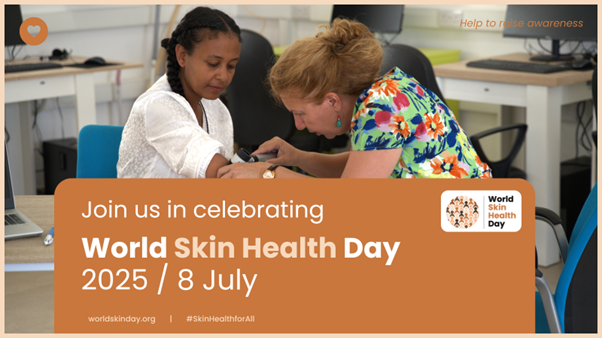Written by Benjamin Clark
As the body’s largest organ, the skin is affected by a vast number of diseases, with over 3,000 distinct dermatological conditions impacting more than 1.8 billion individuals globally at any time (1). With the prevalence of chronic skin conditions projected to rise over the next 15 years (2), the need for timely access to effective treatments is more pressing than ever. At Source, we have extensive experience in skin conditions, including:
-
- Conceptualising and developing cost-effectiveness models (CEMs)
- Conducting systematic literature reviews (SLRs) and evidence synthesis
- Preparing submissions for health technology assessment (HTA) agencies such as the National Institute for Health and Care Excellence (NICE) and the Scottish Medicines Consortium (SMC).
Through recent projects, we have identified several recurring methodological and practical challenges regarding the evidence base for submissions, which are summarised below:
1. Trial design
Interpreting trial data for use in CEMs can be difficult. In our experience trials often have:
-
- Heterogenous populations, which can limit generalisability (e.g. multiple disease subtypes, and patients with differing disease severity levels or prior lines of therapy).
- Variable treatment adherence can create challenges in capturing treatment effect.
- Uncertain patient treatment histories can complicate positioning of the intervention within the treatment pathway.
- Large placebo effects and modest quality of life gains make demonstrating treatment benefit challenging.
2. Comparator therapies
There are several challenges in relation to comparator therapies:
-
- Clinical guidelines can be vague in terms of positioning and may not completely align with real-world practice (e.g. combination therapy and treatment cycling), which can make comparator selection difficult.
- Comparator treatments are often low-cost, making cost-effectiveness harder to demonstrate.
3. Reliance on quality of life gains
In most dermatological conditions, interventions improve quality of life but have limited or no impact on mortality, meaning that quality-adjusted life year (QALY) calculations rely heavily on valuing improvements. However:
-
- Endpoints can be difficult to interpret and incorporate into CEMs (e.g. itch scores and activity indices based on proportional responses).
- The validity, reliability, and sensitivity to change of instruments like the EQ-5D-5L in dermatological conditions is not certain, as evidenced by the development of condition-specific bolt-ons (3).
4. The relapsing-remitting nature of skin conditions
Many dermatological skin conditions follow a relapsing-remitting pattern, with intermittent flares that may cause irreversible skin damage. This creates multiple modelling challenges:
-
- Structuring health states and capturing flare frequency/severity within a CEM can be complex and is compounded by a lack of model precedent in some conditions.
- Extended periods of remission can raise questions about the need to include treatment stopping rules, even if these were not included within the trial protocol or marketing authorisation.
5. Estimating long-term effectiveness
Dermatological trials are frequently short in duration, with primary endpoints (often response rates) recorded after a few months of treatment. This means extrapolation can be challenging, particularly if evidence of natural history is limited:
-
- Extrapolation therefore becomes heavily assumption driven.
- Assumptions are typically required for treatment adherence/persistence and disease stabilisation thereby introducing uncertainty into the model.
Source Health Economics has experience in mitigating the challenges associated with economic evaluations for dermatological treatments. If you would like to learn more about our experience or discuss the complexities you are facing for a dermatological therapy, please get in touch.
References
- World Skin Day. Available at: https://worldskinday.org/about/.
- Oh, Jiyeon et al. Global, regional, and national burden of asthma and atopic dermatitis, 1990–2021, and projections to 2050: a systematic analysis of the Global Burden of Disease Study 2021. The Lancet Respiratory Medicine, Volume 13, Issue 5, 425 – 446
- Szlávicz E, Szabó Á, Kinyó Á, Szeiffert A, Bancsók T, Brodszky V, Gyulai R, Rencz F. Content validity of the EQ-5D-5L with skin irritation and self-confidence bolt-ons in patients with atopic dermatitis: a qualitative think-aloud study. Qual Life Res. 2024 Jan;33(1):101-111. doi: 10.1007/s11136-023-03519-6. Epub 2023




